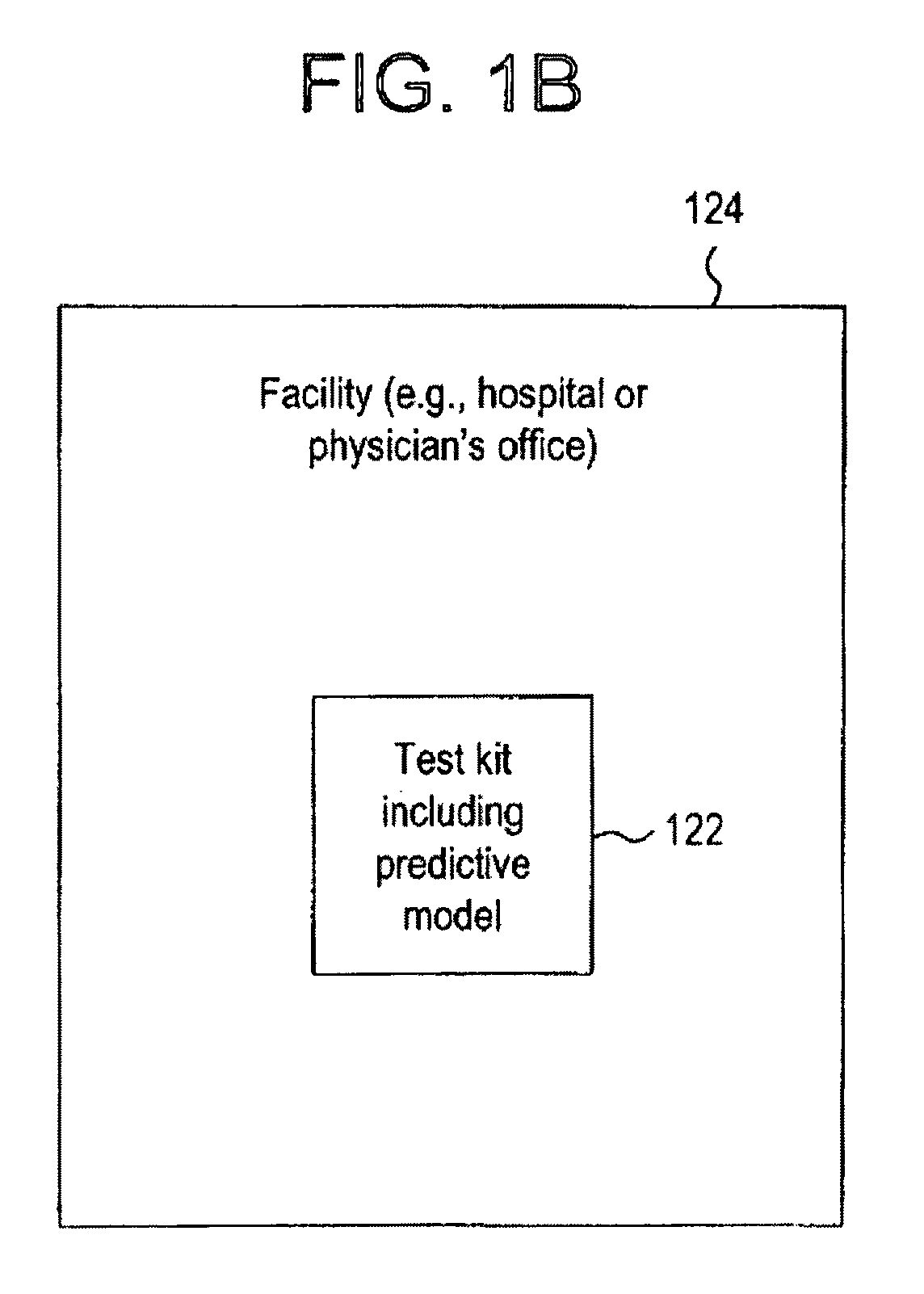System for evaluating a pathological stage of prostate cancer
a pathological stage and prostate cancer technology, applied in the field of system for evaluating a pathological stage of prostate cancer, can solve the problems of conflicting interpretations, inconvenient diagnosis, and inability to accurately predict the outcome of the prostate cancer treatment, and achieve the effect of more reliable and accurate image segmentation
- Summary
- Abstract
- Description
- Claims
- Application Information
AI Technical Summary
Benefits of technology
Problems solved by technology
Method used
Image
Examples
example 1
n of Prostate Cancer Progression
[0161]In accordance with an illustrative embodiment of the present invention, a predictive model was developed for use on diagnostic biopsy cores of prostate tissue, where the model predicts the likelihood of advanced prostate cancer progression even after a curative-intent radical prostatectomy. This predictive model was developed from data on a multi-institutional patient cohort followed for a median of 8 years. Features evaluated in connection with generating the model included morphometric features extracted from the diagnostic prostate needle biopsy, molecular features corresponding to an expanded in-situ biomarker profile, and several clinical features. The predictive model may be utilized, for example, at the time of diagnosis of prostate cancer and before treatment, to provide an objective assessment of the patient's risk of prostate cancer progression. It is believed that the model resulting from this study, which accurately predicts outcome,...
example 2
n of Favorable Pathology (Indolent Disease)
[0249]In accordance with another illustrative embodiment of the present invention, a predictive model was developed for use on diagnostic biopsy cores of prostate tissue, where the model predicts the likelihood that a patient's disease is indolent, namely the likelihood that a patient would have a favorable pathology (indolent disease) if the patient were to undergo a radical prostatectomy to treat prostate cancer in the patient. Generally, predictions by the model may assist patients and / or their physicians with determining whether to undergo a radical prostatectomy or other course of treatment. For example, a prediction indicative of an indolent disease (favorable pathology) may weigh in favor of watchful waiting or other, comparatively less aggressive course of treatment. Conversely, a model prediction indicative of a nonindolent disease (unfavorable pathology) may weigh in favor of a radical prostatectomy or other, comparatively more ag...
example 3
Receptor (AR) Studies and Cell Line Control
[0282]In accordance with additional illustrative embodiments of the present invention, two studies were performed demonstrating the association of androgen receptor (AR) with responsiveness or unresponsiveness to hormonal therapy for prostate cancer (Study 1) and prostate cancer specific mortality (PCSM) (Study 2), also referred to as death from prostate cancer. In connection with Study 2, three prostate cancer cell lines known to express high (LNCaP) and low to absent (DU145 and PC3) AR protein were incorporated into the immunofluorescence (IF) analyses in order to provide a measure of reproducibility for the multiplex IF assay. Although Study 2 relating to PCSM provides an illustrative example of the use of cell line controls, it will be understood that cell line controls can be applied in other embodiments of the present invention relating to, for example, other cell lines (e.g., cell lines other than LNCaP, DU145, and PC3) and / or other ...
PUM
 Login to View More
Login to View More Abstract
Description
Claims
Application Information
 Login to View More
Login to View More - R&D
- Intellectual Property
- Life Sciences
- Materials
- Tech Scout
- Unparalleled Data Quality
- Higher Quality Content
- 60% Fewer Hallucinations
Browse by: Latest US Patents, China's latest patents, Technical Efficacy Thesaurus, Application Domain, Technology Topic, Popular Technical Reports.
© 2025 PatSnap. All rights reserved.Legal|Privacy policy|Modern Slavery Act Transparency Statement|Sitemap|About US| Contact US: help@patsnap.com



